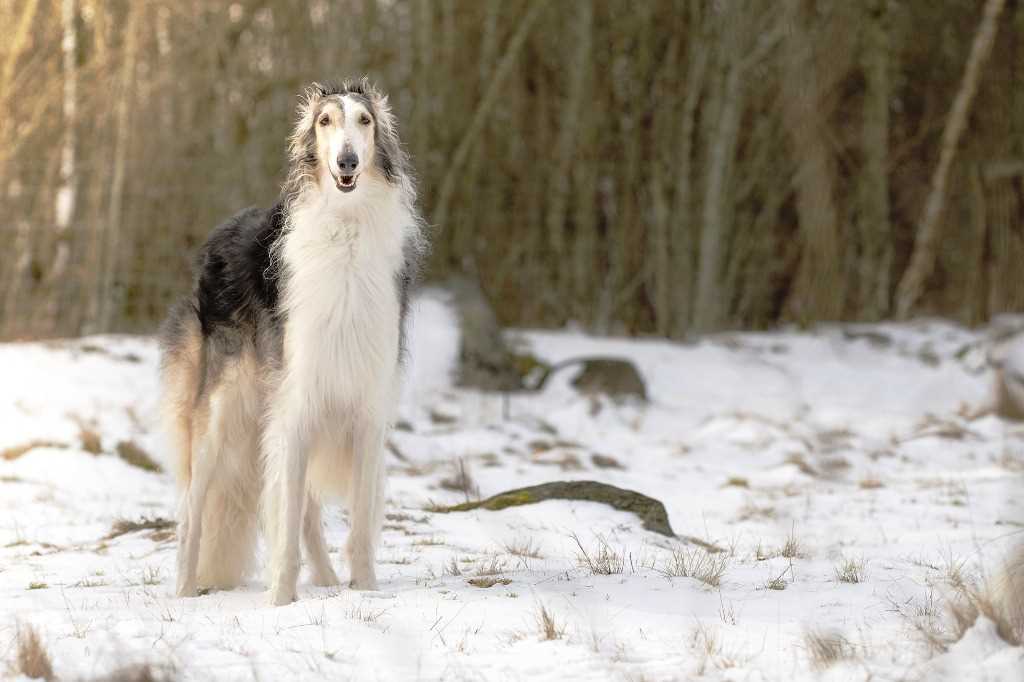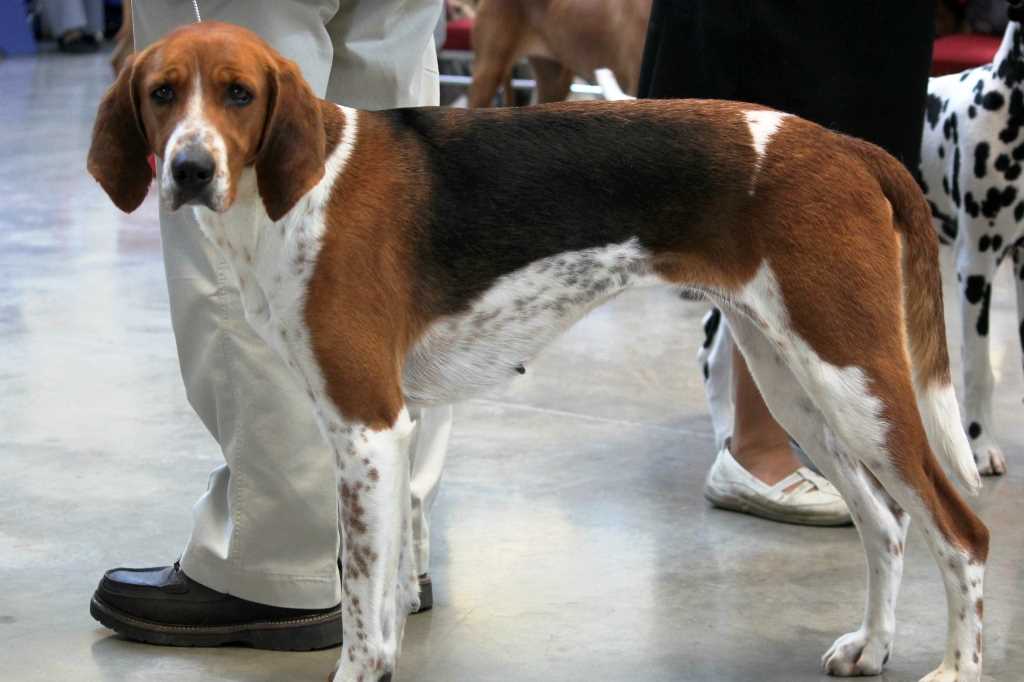The origins of the Barzoi dog breed are very ancient, it is thought to have the same Middle Eastern origins as the Saluki and Afghan. It belongs to the greyhound class, in fact in Russian barzoi means greyhound. Like all greyhounds, it originated in Ethiopia and then spread to Egypt. Centuries later it would reach the Nordic regions via the Black Sea and finally arrive in Russia imported by a Russian nobleman, but these beautiful and agile running dogs did not adapt to the very harsh climate of those territories. They were therefore crossed with Russian collies and trailing dogs, giving them the necessary strength and endurance.
In the Middle Ages the Russians used these greyhounds for hunting. In fact, it is referred to as a long-haired greyhound with dangling ears. The breed continued to evolve in the 18th century. It was used for hunting wolves, a task it performed courageously in a completely instinctive manner, i.e. without any training. According to a presumably Mongolian custom, there is talk of hounds flushing out their prey and forcing them to flee to open ground where packs of barbarians were stationed. It is these very large dogs that dominate the wolf and, by grabbing it by the ears, immobilise it while waiting for the hunters. One of them would then jump down from his horse and try to slide a stick with strings into the wolf’s mouth to muzzle it and take it alive, according to a custom of the time.
They were highly valued by the Russian nobility and received special care and attention from them. Their fame in Russia was enormous, and they were dogs that could not be found on the market, they could only be given as gifts by the Tsar.
Another theory is that they are descended from the ancient Russian greyhound and the Caucasian greyhound.
Unfortunately, in the 18th century a period of decline began for the barzoi, which lost a lot of importance and numbers in Russia, so that some people tried to prevent its disappearance by reviving hunting with the barzoi.
In Europe the barzoi arrived in 1842 as a gift from the Tsar to Queen Victoria and towards the end of the 19th century the first specimens appeared in America. In Europe some English breeders made several crosses in order to obtain dogs with a less dense coat. Fortunately, the original purity of the breed was restored and the Barzoi returned to its original appearance. Today it is still used for hunting, not wolves, but foxes and hares, however its most important role in modern times is as a companion animal.
Character of the barzoi dog breed
The Barzoi is a member of the canine aristocracy and, like all aristocrats, always maintains a certain decorum, has its own way of showing affection, but does not show it in the way that other breeds usually do. It has a quiet and balanced character that loves to be close to its owner towards whom it shows affection and whom it will always defend. He does not like confusion and especially if there are children playing, he simply moves away.
He is famous for his great psychological balance and his innate calmness. However, it has a lot of courage and is therefore suitable for guarding the house and the person. It is very intelligent and therefore can be trained quite easily. However, it needs its own space and independence. Very often it will want to be quiet on its own, perhaps dozing on a sofa, but when you take it out for a run, you realise that despite its imposing size it has a very energetic run.
He is detached from strangers, almost to the point of distancing himself from people he does not know, and is also a very clean dog who loves the comfort of the living rooms and armchairs in the home, where he spends hours and hours resting in a corner.
The relationship with other animals can sometimes be difficult and quarrelsome, so early socialisation will be necessary to limit this temperament.
It is considered to be a companion dog, so it is suitable for everyone, but it should not be forgotten that it needs daily exercise, preferably running.
Appearance of the barzoi dog breed
The Barzoi is a large, long-limbed and strong dog. The main characteristics of this breed are its enormous stature, the richness of its fur and its beautiful colours.
The height at the withers of a male ranges from 70 to 82 centimetres and the weight from 35 to 45 kilograms, females usually a little less. Its constitution is slender but at the same time robust, with a very elongated structure. Females are generally longer than males. It has a good balance of proportions and moves with great elegance. The neck is long and muscular, the limbs muscular and dry, the tail carried in the shape of a sickle and with a very thick coat.
The skull is narrow and elongated, finely chiselled, the muzzle is longer than the skull, the head is so elegant and bare that the main veins can be seen through the skin. The truffle is large and generally black. The eyes are almond-shaped, large and slightly oblique, close together and very dark. The ears are attached high and set back, relatively small, fine and narrow and end in a point.
But its main characteristic is its fur coat. The barzoi has a long, soft, wavy and silky coat, sometimes with large ringlets. Its length is not uniform, around the neck, on the ribs and behind the tail it is longer, while on the head, ears and limbs the fur is satiny short and thick.
As far as colour is concerned, they are found in all shades of gold, white, grey or tigerish. They can also be spotted or uniform but always on a white background. Muzzle and limbs may also be grey tigerish, fire, and sometimes has focal spots, but for the dark Russian barzoi the black mask is characteristic.
Care and health of the barzoi dog breed
The Barzoi is a very robust and hardy dog that does not suffer from any problems. Its life expectancy is about 12 years.
It needs space or a garden, daily walks are indispensable.
As far as the care of the coat is concerned, the long and thick hair must be brushed and combed often, paying much attention to the knots, where, among other things, parasites could nest.
Its diet must be balanced, very well balanced in nutrients and of excellent quality.


